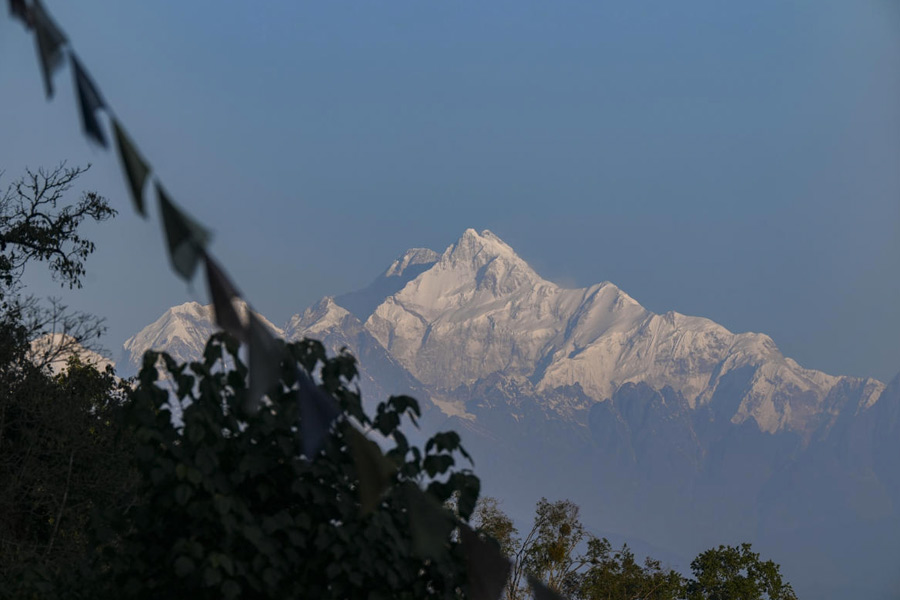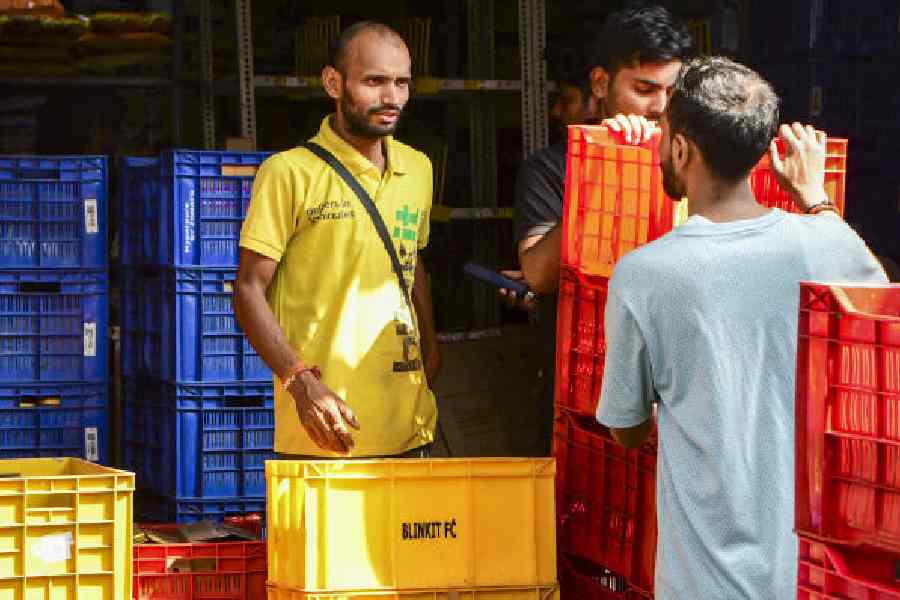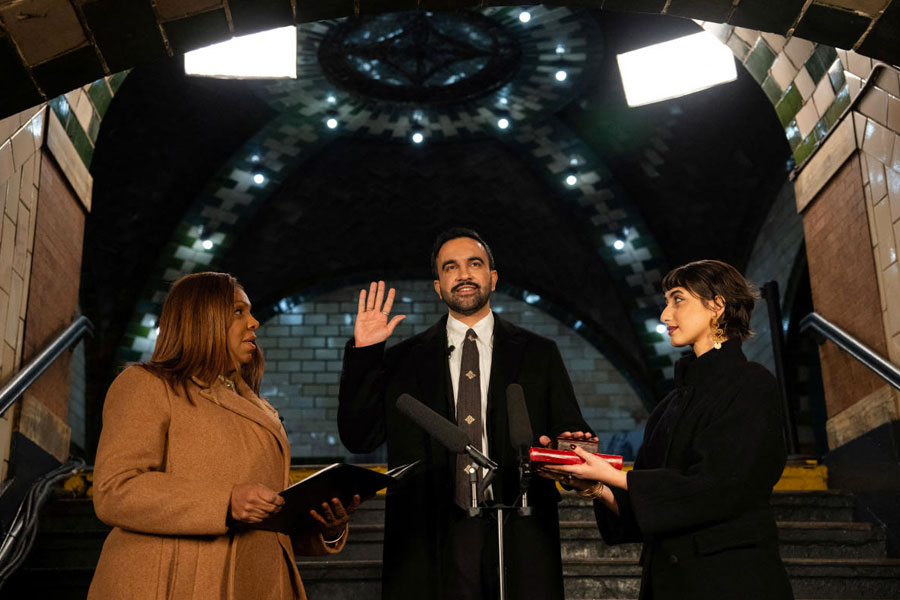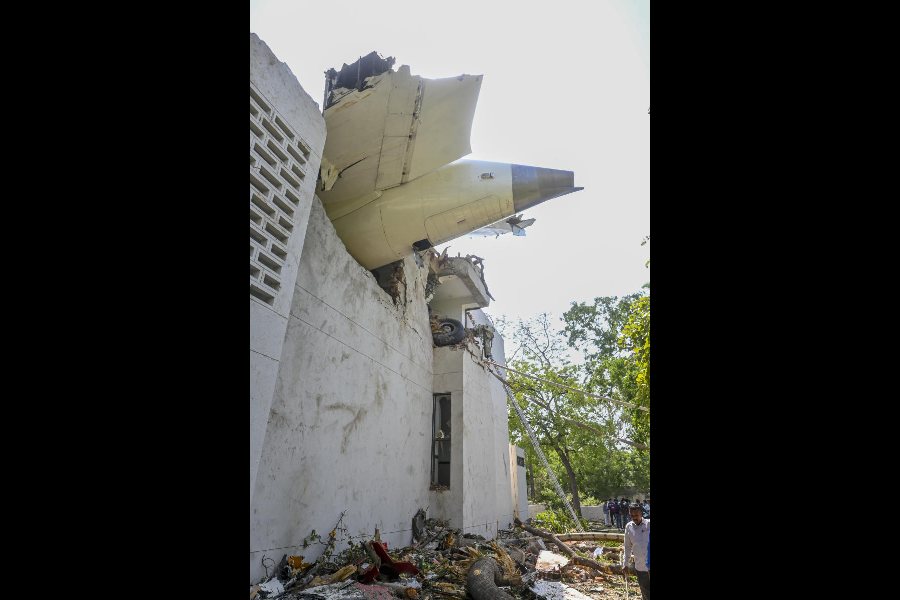 |
 |
| Manas Paran, who took these photographs, was an eyewitness to the leopard attack. He had seen the leopard jump from the second floor of the first house where it had injured a person. It then leaped over a wall and disappeared. He moved towards the cremation ground and some people told him the leopard was inside a house. He and a television cameraperson entered the house and saw a man trying to chase the leopard with an iron rod. He warned the man not to do so, as the leopard would attack. Within seconds, the leopard attacked. He clicked the photos and rushed out through the door. ‘I was worried that it would turn on me. My heart was thumping and hands were shaking; I was terrified. I went in a second time and shouted after seeing leopard on top of the man; they were grappling. I then rushed out again and the man came out of the house’. The leopard had, in the meantime, jumped over the boundary wall and gone into the adjacent house |
Jan. 7: It was man versus animal in our urban jungle. Both lost.
Guwahati’s omnipresent television channels went on the blink but for full-screen text that screamed “Leopard wreaks havoc at Silpukhuri”, and that traffic had been directed to take the circuitous Kharghuli road that skirts the city running along the Brahmaputra, rather than the arterial GNB Road that is at its busiest during peak hours in the morning.
Traffic had been diverted at Gauhati Club point over a kilometre away and at Chandmari about 2km away in the opposite direction. Silpukhuri was for that period the leopard’s terrifying domain.
By the time the first visuals came on, the damage had been done. The leopard, having injured three persons, but perhaps as scared as its victims, had entered a cement godown in the area, following which a few bravehearts had locked the door. Zoo officials, who had been informed, were on their way to tranquillise the animal which was then removed to the Assam State Zoo-cum-Botanical Garden.
For the record, the city put up its worst show: thousands of people crowded the street at Silpukhuri, surging forward to catch a glimpse of the animal which, cornered and threatened and hounded by the crowd, was willing to attack anyone in its path. Every time it turned, the crowd would fall back and then go forward again. Except for the maddening crowd, nothing moved — no vehicles, no TV crew, no police, no zoo officials.
The leopard was first sighted at Utpal Saikia’s house on Jogen Barua Lane, located just before the Nabagraha cremation ground. “I first sighted the animal about 11.30 this morning in our compound. I ran, following which the leopard went to our neighbour’s house,” said Mahesh Nath, Barua’s tenant. “Our dog Bogi had been yelping all night but we never thought there was a leopard in our compound.”
In the neighbouring compound, the first victim who came in the leopard’s way was Hari, the neighbour’s cook. The leopard took a chunk off Hari’s scalp before making off to other homes in the crowded neighbourhood. In the midst of it all, the leopard also attacked Kripesh Dey, the owner of a shop in the area. Dey, too, was critically injured in the head and was later shifted to hospital. “I saw my son under the leopard when I decided to throw a piece of iron that I managed to locate,” said Dinesh Dey, Kripesh’s father. Police said the leopard also mauled a third person, identified as Thakuria, who was with Kripesh, but he was not as seriously injured. Local residents, however, said a fourth person was also injured. He has not been identified yet.
The unruly crowd made the task of tranquillising the animal all the more difficult. It took 45 minutes to tranquillise the leopard instead of the normal five minutes. Two additional shots had to been fired while normally it takes a single shot. The entire episode took three hours, creating chaos in the area.
“Our people need to be sensitised,” said Surajit Dutta, director of the Kaziranga National Park. “You traumatise an animal like this and it will attack. You let it pass, while informing us, and it normally will. We can then get the situation under control as our people are trained to do this.”
“The leopard is a male and about 10 years old,” said M.L. Smith, senior veterinarian at the state zoo.
Utpal Bora, the DFO at the state zoo, said, “The leopard will be released in the jungle in two or three days.”
The killing of a Royal Bengal tiger in Kaziranga on December 5 last year after it attacked a mediaperson on the highway had also been triggered off by the mediaperson who tried to get a photograph of the tiger that was resting in a bamboo grove, Dutta said.
“The armed police who were there then shot the animal. They did so after the photographer got in the way of the animal as it tried to escape.
Point a camera at a tiger or a leopard and it thinks it is being attacked. After that it will lunge at you. That is cat behaviour. And carnivores, like the leopard in today’s incident, are more aggressive.”
It was a textbook case at Silpukhuri this morning, a senior tiger reserve official who refused to be named said. “Leopards, unlike tigers, are more adaptable to city life. This animal, unlike the tiger, will hunt during the day if it doesn’t succeed at night as its tolerance of the sun is very high,” he said.
“Besides, as S.H. Prater says in The Book of Indian Animals, his classic study, the leopard’s habitat brings it more in contact with humans,” he said.
“Leopards may even like city life given the ready access to chicken, dogs, cats and other pets in human habitation. Unlike tigers, they take easily to disturbed habitats. Unlike the tiger, which prefers thick forests, solitude and privacy, thereby staying elusive, the leopard takes easily to scrubland, which Guwahati creates as its ever-growing population tears into its forest cover. Guwahati’s forests and scrubland are full of leopards,” said Dutta.
“Such incidents will only rise in the future. Take the Kamakhya hill. I saw a family of leopards there during an Ambubachi Mela some time ago when I was the divisional forest officer in Guwahati. We had a number of cases involving leopards during my tenure. The availability of goats that people set free at the temple is a ready source of food for the leopards. Today’s leopard may have come down for a hunt from Nabagraha hill (where the situation is quite the same with the Nabagraha temple at the top). Maybe the leopard didn’t manage a catch during the night and then couldn’t make its way back to its lair after daylight,” he added.
For a city that has 11 forest reserves, include two wildlife sanctuaries, Amchang and Deepor Beel, in its vicinity, Guwahati perhaps, like no other city in the world, can boast of a very high concentration of wildlife. The downside, say animal experts, is that the man-animal conflict in the state can only get worse given this scenario. And Assam, despite all that it boasts of, has an unenviable statistic — the state has 2.59 lakh hectares of forest land under encroachment, the highest in the country.
“Look at the four-laning and six-laning of roads around Guwahati for example. Does anyone even bother to think that such acts also cut off corridors that animals have used forever? That they can no longer cross over to the other side of the forest because of such human activity?” said SP Singh, state chief conservator of forests (wildlife). “Look at the mindless growth of Guwahati in every direction. There is no barrier anymore between forested and civil areas. What can you expect?” he asked.
So, is thinking about a long-term solution even an option? “It isn’t,” said Singh. “Animals will stray unless you give them habitats that are big enough to give them everything they need. Even then expect the occasional incident. But people must make it easier for the animal to pass. The need of the hour is to sensitise people on what to do if they sight an animal. The idea is to stay away and inform us, not traumatise the animal, which will only make it attack. Please understand, it is not the animal that has strayed into our domain. We have for so long intruded into the animal’s domain and deprived it of its home. Hence this result,” he added.











